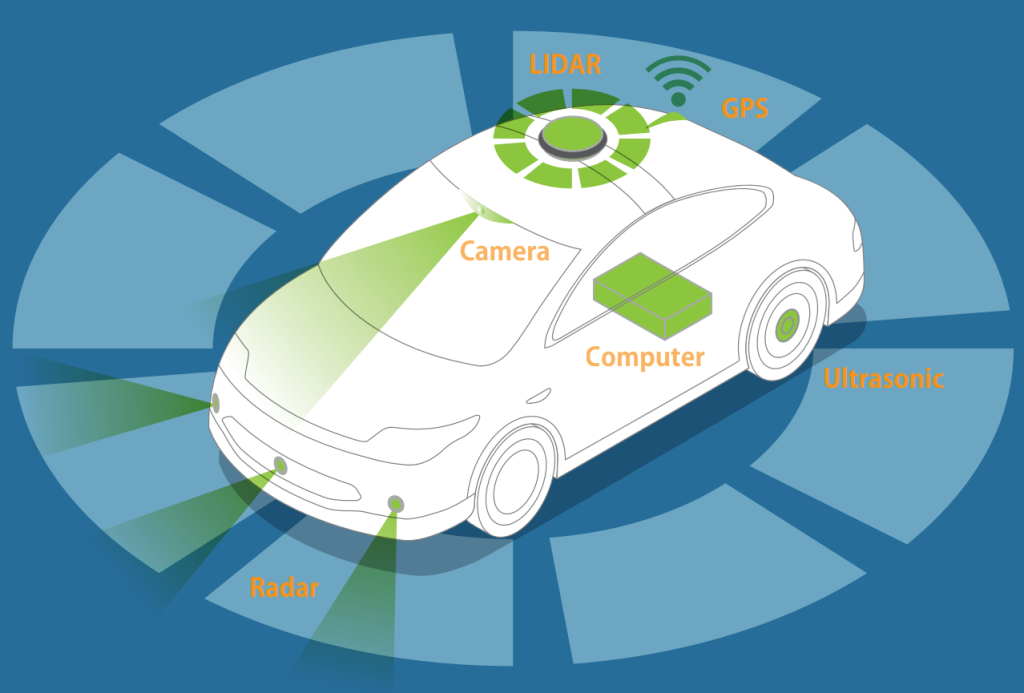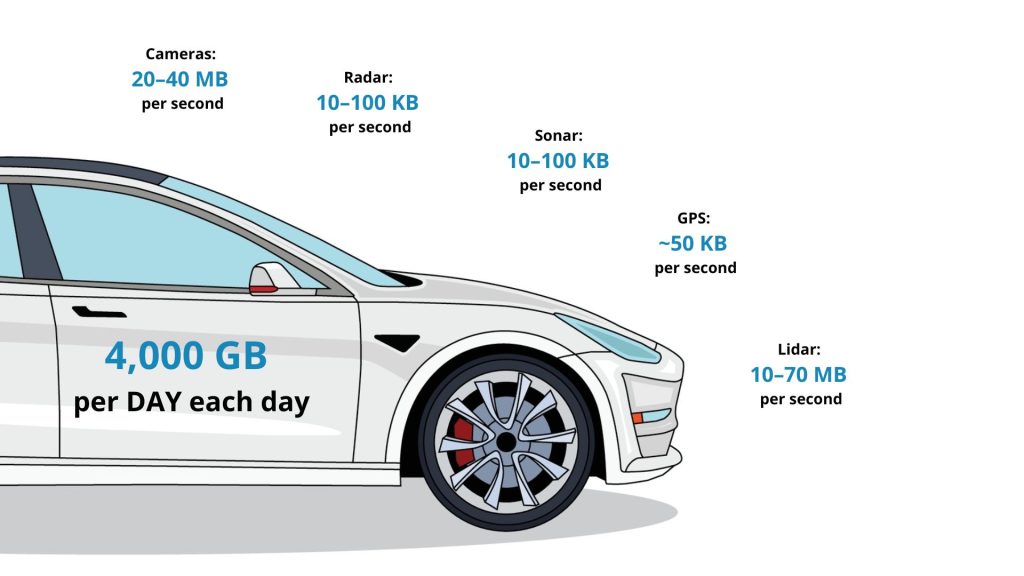Take a moment to look at your car—it might be the last one you’ll ever drive yourself. The era of autonomous vehicles is no longer a distant dream - it feels both inevitable and tantalizingly close.
Leading automakers have long predicted that self-driving vehicles will revolutionize the world, with widespread adoption expected between 2018 and 2030. As we step closer to this new treshold, let's explore the technology, challenges, and opportunities shaping this remarkable transition.
The Autonomous Future: Roadblocks and Green Lights
Imagine sitting back and enjoying the ride while your car does all the work. Sounds tempting, doesn't it? But the benefits of autonomous driving go beyound sole comfort.
Self-driving cars promise to:
- Free Up Your Time: No more focusing on the road; enjoy leisure or productivity during commutes.
- Save Urban Space: Minimize parking needs with efficient vehicle deployment.
- Enhance Convenience: Provide optimized routes and instant recommendations for points of interest or urgent purchases.
- Promote Sustainability: Reduce fuel consumption, lower emissions, and improve traffic flow.
- Improve Safety: Minimize accidents caused by human error, potentially saving millions of lives.
With these advantages, autonomous vehicles will redefine mobility as we know it.
But despite the promises above, challenges remain. These obstacles can be grouped into three categories: legal, ethical and technical.
On the ethical front, these vehicles must address complex challenges, including safety, moral dilemmas during accidents, and the broader societal implications of job displacement. A particularly contentious issue is how these vehicles should respond in unavoidable crash scenarios—should they prioritize passenger safety or protect pedestrians? Equally pressing is the need to ensure that these technologies remain accessible and affordable, preventing them from exacerbating social inequalities.
Legally, the shift to autonomous systems challenges existing frameworks. Determining liability in accidents—whether it falls on the manufacturer, software developer, or owner—requires new legal standards. Outdated traffic laws and insurance models need a complete overhaul to address the unique nature of AV operations. Additionally, cybersecurity risks and intellectual property disputes add layers of complexity. Bias in AI algorithms could also result in discriminatory outcomes, violating anti-discrimination laws.
These challenges are particularly difficult to address, as they lie beyond the direct control of the automotive industry and heavily rely on the decisions of local governments. However, while these issues require broader societal and regulatory input, advancements in autonomous driving technology continue to accelerate.
5 Technical Pillars of Self-driving Future
The pace of innovation is accelerating as automakers, tech giants, and startups collaborate. Five key pillars are driving advancements:
1. Advanced Sensors and Software
To navigate roads safely, autonomous vehicles rely on four key elements:
- Advanced sensor technology to perceive the environment.
- Powerful computing systems to process vast amounts of data.
- Reliable software algorithms for decision-making.
- Connectivity for communication with infrastructure and other vehicles.

Just a few years ago, the cost and quality of sensors dominated discussions about the viability of autonomous vehicles. Early prototypes, like Google's self-driving cars, relied on LIDAR systems costing around $75,000 per unit, accounting for half the vehicle's total price of $150,000. This made the concept impractical for widespread adoption, with a single ride priced comparably to owning a private jet.
Today, companies like Velodyne offer compact alternatives for as little as $500, making the technology accessible to more manufacturers. As a result, the financial barriers that once hindered progress are steadily disappearing.
As hardware challenges subside, the focus shifts to software.
Software is now at the heart of the autonomous vehicle market, capturing the largest share of opportunities. The potential for innovation spans several categories of expertise, including:
- Perception software: Translating sensor data into actionable insights.
- Navigation systems: Ensuring precise route planning and adaptation.
- Decision-making algorithms: Managing real-time driving scenarios and safety protocols.
- Integration platforms: Seamlessly connecting vehicles to infrastructure and the cloud.
Thus, the future of self-driving cars depends heavily on automotive software providers who are tasked with creating the sophisticated systems required to meet the unique demands of autonomous technology.
2. Intelligent Navigation and Mapping
Precise navigation and mapping form the backbone of safe and efficient operation for autonomous vehicles. These systems integrate sensors, software, and GPS data to process an astounding 4,000 gigabytes of information daily. Real-time updates, powered by advanced machine learning algorithms, enable vehicles to adapt dynamically to the ever-changing landscape of road conditions. However, this continuous exchange of data between vehicles and the cloud creates substantial challenges, including potential network congestion and escalating demands for data storage—a pressing concern for automotive software developers.

Shifting Towards In-Vehicle Data Processing
To alleviate the strain on cloud systems, the industry is embracing in-vehicle data processing solutions. One innovative approach is the development of "self-healing maps." These maps utilize onboard AI and deep learning technologies to allow vehicles to navigate with minimal reliance on cloud services. Equipped with advanced computer vision algorithms, vehicles can independently recognize landmarks, road signs, and static objects, constructing detailed 3D maps in real time.
Crowd-Sourced Mapping for Continuous Updates
Reducing cloud dependence offers another key advantage: vehicles can focus their data transmissions on sharing only critical missing map information. This fosters the growth of crowd-sourced, constantly updated maps, where vehicles collaborate to refine and enhance shared navigation data. Such a system ensures accuracy while streamlining data flows, paving the way for more reliable and autonomous driving systems.
3. Vehicle Connectivity and Communication
The future of autonomous vehicles depends heavily on fostering trust between consumers and their cars. Would you feel comfortable entrusting your life to an AI-powered taxi without fully understanding how it operates? This trust gap can be bridged through robust connectivity and communication systems.
To earn their place as reliable traffic participants, autonomous vehicles must communicate effectively—not just with the cloud (for geolocation and map updates) but also with humans (V2H), other vehicles (V2V), and surrounding infrastructure (V2I).
Vehicle-to-Human (V2H) Communication
V2H communication relies on advanced human-machine interfaces (HMIs) to make vehicle intentions transparent to passengers and pedestrians. Using natural language processing (NLP) algorithms and voice recognition, these systems enhance user interaction with infotainment and navigation tools. By revealing the AI's decision-making process in real-time, V2H fosters confidence in autonomous systems, creating a crucial bridge between humans and machines.
Vehicle-to-Vehicle (V2V) Communication
V2V communication empowers autonomous vehicles to exchange critical information with one another, improving efficiency and safety. This technology allows vehicles to share updates about obstacles, traffic patterns, and pedestrians long before they become visible. By bypassing human-centric traffic signals and relying on a shared "vehicle language," V2V systems enable smarter, more coordinated traffic behavior among self-driving cars.
Check out a related article:
Don’t Drive Me Crazy: Features to Ensure Self-Driving Car Safety
Vehicle-to-Infrastructure (V2I) Communication
V2I technology connects autonomous vehicles to the physical environment, such as buildings, traffic lights, and road signs. For instance, cars might receive signals warning of potential red-light violations or directions to maintain an optimal speed for a 30-kilometer green-light stretch. Beyond individual vehicles, V2I systems are paving the way for smart cities, where data-driven decisions enhance urban mobility on a much larger scale.
4. Cybersecurity
As driverless cars grow smarter, they must also become more resilient against cyberattacks to ensure passenger safety. Early adoption of advanced driver assistance systems (ADAS) has already demonstrated the ability to prevent collisions, such as stopping a car heading toward a wall. However, a hacked vehicle that suddenly stops in traffic—or worse, is remotely controlled—poses a far greater risk.

The Rising Importance of Cybersecurity
The interconnected nature of autonomous vehicles makes them attractive targets for hackers. Manufacturers like Tesla have proactively tested their systems by inviting hackers to expose vulnerabilities in exchange for rewards. For example, the Tesla Model S was hacked to remotely unlock doors, control air conditioning, and even start the vehicle—all within a week. These field tests are invaluable for identifying and patching critical security flaws before they can be exploited.
Building Robust Security Systems
The automotive industry is collaborating with software security providers to mitigate these threats. The ideal solution involves designing advanced architectures capable of detecting and neutralizing intrusions. By conducting penetration tests and simulating potential attack scenarios, manufacturers can build defenses that prevent unauthorized access, block abnormal behavior, and maintain the vehicle’s integrity.

5. Collaborative Platforms and the Power of Data Integration
In the race toward autonomous vehicles, Open Location Platforms (OLPs) have emerged as transformative tools, reshaping how data is shared and utilized across industries. These platforms foster seamless collaboration between automakers, tech innovators, and urban infrastructure, laying the groundwork for a truly interconnected transportation ecosystem.
Bridging Industries for Faster Progress
OLPs facilitate cross-industry partnerships that accelerate the adoption of advanced driver-assistance technologies. By providing a common digital framework, these platforms allow automakers to integrate cutting-edge navigation and traffic management solutions directly into their current models. This eliminates the need to design entirely new prototypes, speeding up the deployment of autonomous technologies while reducing development costs.
From Roads to Cities: A Unified Data Hub
More than just aiding vehicles, OLPs connect to a city's infrastructure, merchants, and suppliers, transforming into expansive data hubs. These platforms analyze traffic conditions in real time, optimizing routes, reducing congestion, and even supporting personalized user experiences. For instance, by combining a driver’s past travel patterns with local merchant data, OLPs can suggest nearby deals or services, adding a layer of convenience and personalization to the driving experience.
The Role of AI in Traffic Intelligence
With a growing number of vehicles equipped with sensors and AI tools, OLPs amass vast volumes of road environment data. These platforms utilize advanced algorithms to process this information, offering real-time insights into traffic behavior and environmental changes. This dynamic exchange of data not only enhances safety and efficiency but also paves the way for crowd-sourced, continuously updated high-definition maps that evolve with road conditions.
OLPs symbolize a crucial step in creating a connected and efficient ecosystem for autonomous driving. By integrating disparate sources of information—from vehicles to city infrastructure—they unlock the potential for smarter cities and safer roads. As these platforms continue to evolve, they stand as a testament to the power of collaboration and data-driven innovation in shaping the future of mobility.
The Road Ahead
While challenges persist, the progress in autonomous vehicle technology is undeniable. The integration of AI, connectivity, and advanced navigation is transforming not only the automotive industry but also urban mobility, logistics, and city planning.
As these innovations take shape, the dream of a driverless future is becoming a tangible reality. The era of autonomous vehicles is not just about cars—it’s about redefining how we interact with technology, our cities, and each other.
The journey has begun, and the destination promises to be extraordinary.
Leave a Comment